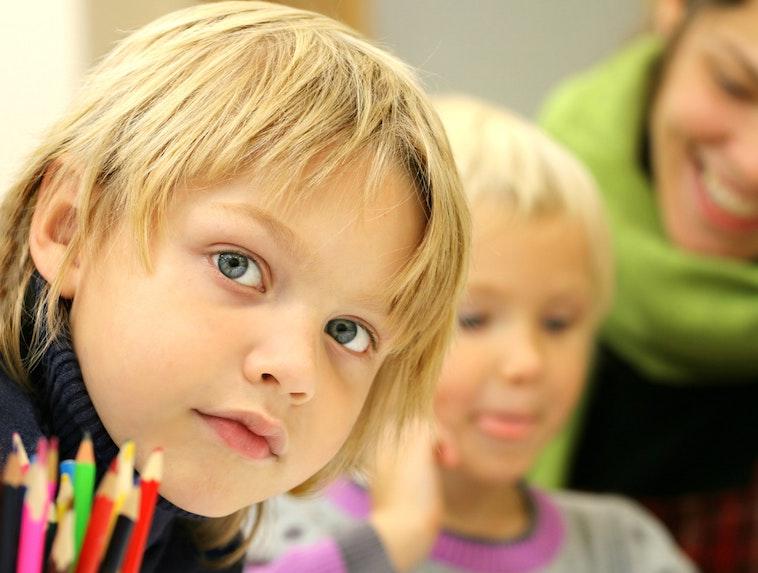Companies Step In to Preserve Ecological and Economic Benefits of Bats


This Halloween, befriend a bat. Dozens of companies are doing it. You might wonder why corporations would care about these much-maligned creatures. Those small flying mammals that adorn houses for Halloween and got a bad (and unfair) rep from Count Dracula have enormous ecological and economic significance. There’s a direct bottom-line impact to preserving the 1,300 species of bats around the world and their habitat.
In our family, we love bats. A favorite book of my daughters when they were young was Stellaluna, which follows the adventures of a lost baby fruit bat. Later, my ornithologist husband and I took them to the Venado Caves in Costa Rica to look for some of the four main bat species that dwell there. We were lucky to spot a few. Our fondness for these clever mammals made our daughters puzzle about why their friends thought bats were scary.
Still frightened of bats? The companies who are working to preserve the ecological and economic of benefits seem to think the scary part would be losing bat species. Ontario Power Generation, BASF, Covia, DTE Energy, Freeport-McMoRan, GM, LafargeHolcim and Marathon Petroleum are all engaging in bat conservation projects on their corporate-owned or leased land. In a recent white paper, the Wildlife Habitat Council reviewed the companies’ efforts and outlined why they’re important.
Insectivorous bats save agriculture billions of dollars through predation of a multitude of agricultural pests. Other bats eat fruit and nectar, acting as pollinators and spreading seeds of the fruit they eat, proving essential to the success of many food products like tequila and chocolate (need we say more?), consequently contributing to the global economy.
Consider these facts from Bat Conservation International:
- Bats pollinate more than 500 species of plants, ensuring the production of fruits that support local economies, as well as diverse animal population
- Bats save U.S. farmers $23 billion annually in pesticides and reduced crop damage by consuming vast amounts of insects, including some of the most damaging agricultural pests
- Fruit-eating bats in the tropics are called “farmers of the tropics” because they disperse seeds that are critical to restoring cleared or damaged rainforest
- Bat droppings (guano) are valuable as a rich natural fertilizer worldwide providing economic benefits for landowners and local communities
Making bats feel at home
Various companies are helping bats thrive in a number of ways, according to the Wildlife Habitat Council. DTE Energy has installed bat houses on its 2,350-acre Taggart Compressor Station site in Michigan to provide roosting habitat that is lacking in the surrounding ecosystem. LafargeHolcim’s Onoway Aggregates in Alberta, Canada not only feature bat houses but engage employees in acoustic monitoring and capture-release monitoring to assess the species.Cave- and mine-dwelling bats are susceptible to disturbance from predators, cavers, vandalism and harassment. Therefore, Covia, a minerals and material solutions company in Michigan, provides shelters for hibernating bats. Marathon Petroleum’s Palestine Neal Pit engages the community and its employees through learning opportunities and community events and a bat learning station. BASF’s Vermont site in Johnson, Vermont works with several local partners to conduct surveys of the site’s bat species and their population.
General Motors’ Milford Proving Ground turns employees into bat detectives, giving them Echo Meter Touch 2 devices, which plug into a smartphone or tablet and uses a special app to analyze bat echolocation calls. The app allows participants to see and hear the echolocation sounds that bats use to navigate and hunt for food at night.
There’s no better time to give bats a break than Bat Week, which ends, not coincidentally, today, October 31, on Halloween. And really, you don’t need to worry that a bat might fly in your hair (even though that’s a thoroughly debunked myth).
In many regions, bats are most likely hibernating on October 31.
Image credit: Pixabay
Investors Petition SEC for Mandatory ESG Disclosure


With the recent momentum in the U.S. for more environmental, social and governance (ESG) transparency, it comes as no surprise that a group of investors have petitioned the Securities and Exchange Commission (SEC) to require mandatory ESG disclosure.
While no one expects this to happen any time soon, the SEC has now been put on notice that investors are clamoring for more clarity on ESG disclosure.
The petition, filed on October 1, calls for the SEC to design a framework for companies to disclose “specific, much higher-quality ESG information” than is currently required. “It is time for the SEC to regulate in this area,” the 20-page petition states. The Commission is under no legal obligation to act upon the petition, and an SEC spokesperson declined comment.
The petition was written by business law professors Cynthia A. Williams and Jill E. Fisch, both of the University of Pennsylvania, and signed by investors and associated organizations representing more than $5 trillion in assets under management, including the California Public Employees’ Retirement System (CalPERS), the U.N. Principles for Responsible Investment; and dozens more firms and organizations.
“It’s time to bring coherence”
The petition’s authors make a case for the “clear materiality” of ESG issues, emphasizes large asset managers’ existing calls for standardized ESG disclosure and underlines the importance of such standardized disclosure for companies and the competitive position of US capital markets.Pointing to the existing rulemaking petitions, investors proposals and stakeholder engagement on human capital management, climate, tax, human rights, gender pay ratios and political spending, the message from the investor community is clear: “it’s time to for the SEC to bring coherence to this area.”
“Today, investors, including retail investors, are demanding and using a wide range of information designed to understand the long-term performance and risk management strategies of public-reporting companies,” the petitioners wrote.
“Without adequate standards, more and more public companies are voluntarily producing ‘sustainability reports’ designed to explain how they are creating long-term value. There are substantial problems with the nature, timing, and extent of these voluntary disclosures, however. We respectfully ask the Commission to engage in notice and comment rule-making to develop a comprehensive framework for clearer, more consistent, more complete, and more easily comparable information relevant to companies’ long-term risks and performance.”
Such a framework, they say, would better inform investors and “provide clarity to America’s public companies on providing relevant, auditable, and decision-useful information to investors.”
A muddled world of ESG information
Both companies and investors will attest to the struggles of the current muddled world of ESG disclosure: companies are often perplexed about what ESG information investors find relevant, reliable, and decision-useful, and investors find the voluntary disclosure episodic, incomplete, incomparable and inconsistent.And it is no longer niche investors who want this kind of information. BlackRock, the world’s largest asset manager, wrote in the Petition, “Environmental, social, and governance issues are integral to our investment stewardship activities, as the majority of our clients are saving for long-term goals. It is over the long-term that ESG factors – ranging from climate change to diversity to board effectiveness – have real and quantifiable financial impacts.”
Yet the clarion call for bringing clarity to ESG disclosures is clear: as TriplePundit reported recently, 24 percent of U.S. investors now say that an ESG integrated portfolio will outperform a non-ESG portfolio, five times the number who agreed in 2017.
Investors grow impatient
Regulators in other countries have been heeding that call. The United Kingdom and Sweden require public pension funds to disclose how much they incorporate ESG considerations in investment decisions and the European Commission plans to introduce a regulatory framework supporting sustainable investment. In addition, seven global stock exchanges — in Australia, Brazil, India, Malaysia, Norway, South Africa and England — require ESG disclosure as part of their listing requirements.U.S regulators have been lagging behind, and investors have grown impatient. Whether there is appetite for mandatory ESG disclosure in the Trump administration or Republican-led Congress is doubtful. But the momentum seems to be pointing towards not whether ESG disclosure will become a matter of law—but when.
Image credit: Pixabay
Reforestation Project Combating Climate Change Wins $100,000 Ray of Hope Prize


At least 14.2 million acres of land in the Atlantic Forest has the potential to grow trees - and Brazilian company Nucleário has found a faster and more sustainable way to do so. Nucleário’s use of biomimicry resulted in the company winning the 2018 $100,000 Ray of Hope Prize. Biomimicry is the imitation of models, systems, and elements of nature for solving complex human problems.
Championed by the notion of businesses doing well by doing good, the Ray C. Anderson Foundation along with the Biomimicry Institute have been working together to understand how nature-inspired design can solve problems such as deforestation, and how these solutions can become commercially viable. As a result, the Ray of Hope Prize was launched to crowdsource nature-inspired solutions through the Biomimicry Global Design Challenge.
The Atlantic Forest passes through Brazil, Argentina and Paraguay and is one of the world’s most ecologically diverse regions. Unfortunately, it is also one of the most threatened and exploited regions as deforestation for commercial agriculture, particularly soy production, dominates.
Globally, every year the world loses 18.7 million acres of forests, equivalent to 27 soccer fields every minute, according to the WWF. This deforestation robs animals of their habitats and is a cause of global warming, making sustainable reforestation a global priority for many NGOs. According to many international organizations, if current deforestation levels continue, the world's rainforests may completely disappear in the next 100 years.
Traditional methods of planting and maintaining trees is logistically complicated and expensive, as it is labor intensive and requires regular visits to the reforestation areas. Nucleário’s solution reduces the need of regular manual maintenance of seedlings, the main bottleneck in remote reforestation projects.
"If you just plant seedlings and go away, more than 90 percent will die. Every three months, you have to cut grass, water, apply fertilizer to avoid this,” said Bruno Rutman Pagnoncelli, CEO and founder of Nucleário. An average of 30 percent of planted tree saplings do not survive to become mature trees, so Nucleário says the company is working towards to reduce this number.
Nucleário's plantation device helps seedlings grow like they would in nature by providing them controlled water supply, protecting them from leaf-cutting ants, and preventing them from losing their nutrients. This increases the survival rate of seedlings at a lower cost of time and money, allowing for more efficient reforestation. Designed to safeguard seedlings for three years after plantation, the device then eventually decomposes into the soil.
The Nucleário team has been testing a prototype of this system with the WWF in the Cerrado region of Brazil, the largest savanna ecosystem in South America.
After winning the Biomimicry Global Design Challenge for climate change, Nucleário undertook an intensive 12-month program at the Biomimicry Launchpad that assisted them in further developing their concept with industry experts. It is after this program that they were selected from among five others to win the $100,000 Ray of Hope prize. The Biomimicry Launchpad is the world’s only accelerator program that supports early-stage entrepreneurs working to bring nature-inspired climate change solutions to the market.
Other projects competing for the prize at the Biomimicry Launchpad were RootLink, which connects urban farmers to end users; Refish, a device that can remove particles from the air; Extraction, a filter system that uses the same process as nature for carbon capture; Cooltiva, which mimics nature to ventilate buildings; and BioThermosmart, which applies lessons from animals’ circulatory systems to develop a temperature control system for buildings that harvest waste heat, and cycles it back into the system.
Innovations with biomimicry at their core offer hope that we can use the lessons of nature and evolution to protect it for future generations.
Image credit: Nucleario
The Future of Education Is More About Learning, Less About Teaching


Students sitting at desks in neat rows facing the front of the room. Teachers writing on a chalkboard, delivering information to be memorized and later recalled on tests. Bells that signal it’s time to change classrooms.
What most consider “typical” school design has its roots in the Industrial Age when factory and assembly line workers were in high demand.
But this one-size-fits-all, rote approach to learning is now obsolete.
After all, studies have shown that children learn differently based on individual strengths and preferences and that social and emotional learning (SEL) plays a fundamental role in academic achievement.
What’s more, advances in educational technology mean learning can be more accessible and more personalized than ever before. Data-driven approaches are now available to help educators adapt the learning experience and tailor interventions to each student’s unique needs.
And there are practical reasons for education reforms, as well. Simply stated, redesigning outdated school models will help students reap rewards down the road—because today’s children will be entering a labor market that is predicted to favor workers who are adaptable, social, and creative over those who can perform routine tasks.
Put all of this together and you can’t help but wonder: Can public schools adapt? Will they be able to meet the increasingly complex needs of students (and employers)?
For Joanna Burleson, managing director at Monitor Institute by Deloitte, the answer to those questions is a resounding “yes,” provided stakeholders work together to make education more about learning, and less about teaching.
As Burleson describes it, the “grass roots”—public school families and communities—need to collaborate with the “grass top”—state and federal legislators—to update curriculum and methods, ensure the availability of adequate tools and technology, and support professional development for teachers.
“The ‘roots’ and the ‘top’ need to collaborate. It’s an ecosystem,” she says. “Change needs to happen at all levels.”
And the Monitor Institute is available to ease transitions like these, helping clients reinvent what is thought of today as public education. According to the organization’s website, Monitor Institute teams have worked on more than 40 social impact projects in the education space, many in collaboration with leading colleges and universities, foundations, nonprofits, and government entities. One of their fundamental missions is to strengthen connections and collaboration between K-12 and higher education institutions, between the public and private sectors, between funders and actors, and between teachers, parents, and students.
Burleson also stresses that the biggest barriers to education reform are not necessarily financial. In fact, building consensus and aligning behaviors around priorities is often the most challenging hurdle of all, she says. That’s because it’s difficult to determine which changes are most effective. How should student outcomes be graded—by test scores, graduation rates, college/job placement, or some other factor entirely? And when is the best time to look at how well students are doing—in high school, in college, or years later when they’re full participants in the workforce?
“It’s a paradox,” Burleson says. “We all want students to graduate high school with skills and knowledge to be successful at life, but how is that measured? It can take years to gauge the impact of an education system on a student’s life.”
Finding the proof points to resolve that paradox is one of the main factors driving innovation to meet the challenges of 21st century education, Burleson explains.
“It’s exciting to be working in this field right now,” she concludes. “Organizations are doing this work, helping districts re-imagine learning. It’s no longer about one style of teaching and one style of learning. It’s about designing schools to better accommodate the way children learn and moving us forward, away from simply teaching to the test.”
Image credit: Pixabay/klimkin
Next-Level Corporate Social Responsibility and the End of Gab


Last week's massacre at a Pittsburgh synagogue has focused attention on Gab, the extremist, alt-right social media platform favored by white nationalists, including the Pittsburgh murderer. Gab has now been practically forced offline by the tech companies that provided it with digital support. That's a significant development because it fits into an emerging next-level corporate social responsibility pattern, in which business leaders are stepping in to address issues of broad social concern when others fail to act.
The corporate actions against Gab are also significant because they put mainstream social media platforms -- Facebook, Twitter, and YouTube among others -- on notice: they could be next.
Social media has a corporate social responsibility problem
Social media has been long overdue for a corporate social responsibility reckoning. The core of the problem is that popular platforms like Facebook, Twitter, YouTube and Instagram are, well, popular. The business model is one that relies on high participation at zero cost to the user, with minimal bottom line expenses for monitoring.
Enforcing community standards on these platforms was a monumental task from the get-go, but not an impossible one. The problem is that until truly effective algorithms are developed, social media companies need to rely on hiring more human beings to make decisions about online content, and that costs money.
To justify lack of investment in human resources, social media companies have promoted the idea that online connectivity is by nature a good thing.
That's obviously not representative of the full range of online expression. It's simply a formulation of convenience, one that relieves the company from the responsibility -- and the considerable expense -- of hiring enough staff to keep online interactions on a civil and respectful level.
In real life, of course, there is nothing intrinsically good about getting people together. It simply depends on who is talking to whom, and with what motive.
Buzzfeed reporter and tech insider Ryan Broderick sums up the corporate social responsibility issue for social media companies in a nutshell:
The way the world is using their phones is almost completely dominated by a few Silicon Valley companies. The abuse that is happening is due to their inability to manage that responsibility. All of this has become so normalized in the three years since it first began to manifest that we just assume now that platforms like Facebook, YouTube, WhatsApp, and Twitter will exacerbate political and social instability. We expect they will be abused by ultranationalist trolls. We know they will be exploited by data firms. We wait for them to help launch the careers of populist leaders.
The "inability" is baked into the business model, so it's not really a lack of capability. It's a deliberate corporate social responsibility choice (or lack thereof) to not pay the army of staff that would be needed to vet and rank social media posts more effectively.
Gab as low hanging fruit
With all this in mind, let's take a look at the corporate social responsibility response to Gab. The startup was launched in 2016 and quickly gained a reputation as the "alt-right" alternative to Twitter.
As one measure of the amount of hate speech on Gab, advertisers shied away long before the latest massacre occurred, and Apple and Google Play refused to list the Gab app on their stores. Gab's initial online host was Azure, but that relationship ended after the site's anti-Semitic vitriol caught the attention of Microsoft president Brad Smith last summer.
Nevertheless, Gab stayed online -- until after the shooting. PayPal and another online payment vendor, Stripe, were both already in the process of suspending Gab before the shooting. They quickly closed Gab's accounts afterwards.
Gab’s current host, Joylent, cut Gab after providing it with a 24 hour window to find another host. The site also lost its domain on GoDaddy.
Gab has learned an important lesson: companies that provide services for online platforms are no longer willing to put their brand reputation at risk by enabling bad behavior -- or at least, not extremely bad behavior.
Social media whack-a-mole
Of course, Gab will have an afterlife, just as the influence of Breitbart and InfoWars continues to ripple out. Gab's owners and executives can still get a sympathetic hearing within the right wing television, talk radio and public appearance circuits. They will mostly continue to influence high profile Republicans -- up to and including President Trump -- who seek to build credibility with their core voters.
It's also inevitable that Gab users will continue to carry the torch through mainstream social media, including Twitter, YouTube, along with WhatsApp and Instagram, both of which are under the Facebook umbrella.
The question now is whether or not the outrage over the synagogue shooting will have any significant impact on the corporate social responsibility profile of mainstream social media platforms. These platforms have regularly taken their share of hits for enabling harmful online behavior that spills seamlessly into the real world, without making any substantial change to their business models.
That could change, now that the stakes for brand reputation are more clearly in evidence. The consumer boycott movements #grabyourwallet and Sleeping Giants have already put major brands on notice that they face significant reputational risks by associating with platforms that enable hate and violence -- and those brands are beginning to respond.
Image: "Facebook Beachfront" by mhkmarketing/Flickr.com.
How Data Privacy Regulations Affect Your Supply Chain


This past May, the European Union’s General Data Protection Regulation (GDPR) went into effect. The comprehensive regulations shift the dominant paradigm of online data from an opt-out model, in which users had to take action to control their data, to a privacy by design model where privacy and user control must be up-front and center.
This small shift has wide-ranging impacts. While for most people, GDPR meant their email in-boxes were flooded with updated privacy notices and email opt-in requests, in the business world, it was when data privacy and protection became a required business practice and no longer optional.
In fact, companies would not have been caught off guard had they been following the basic tenets of corporate social responsibility. Privacy is increasingly being accepted as core to good CSR, and forward-thinking companies have been integrating it into the policies for years. Companies should not merely be taking privacy seriously, and ensuring that all of its suppliers and other actors along a supply chain are compliant only because of GDPR, but because it is part of their core values as good corporate citizens.
One area especially affected is a company’s supply chain. Because GDPR gives little leeway for non-compliance, has strict enforcement mechanisms, and applies to all companies that do business in Europe (whether they’re based there or not) supply chains – which often cross multiple markets and borders – are key to GDPR compliance. This means that companies doing data-related business with Europe must not only comply with the GDPR by receiving adequate consent from users whose personal data they store, they must also ensure that all of the suppliers and the technologies they use are compliant as well.
“The revolutionary technologies that have enabled modern business, such as infrastructure as a service, platform as a service, software as a service, and business processes as a service, all need to be reexamined under the new rules,” said Nazli Erdogus, a senior solution consultant at Kinaxis, a supply chain management company based in Canada.
To do this, companies must first understand what data practices along their supply chains look like, which often requires audits and risk assessments centered around data privacy. While that sounds like a daunting task, forward-thinking companies should have had time to prepare as there were two years between GDPR being passed and going into effect. During that period, many supply chain experts, platforms operators, and industry leaders worked to create strategies for how companies around the world could factor in how GDPR’s data privacy requirements would impact operations.
“I believe most U.S. companies, especially ones that have global business, are aware of the GDPR impacts in their operations at this point,” said Erdogus.
At the same time, data shows that many companies have dropped the ball. A study from CompTIA in April 2018 of 400 U.S. companies discovered that only 13 percent were fully GDPR compliant. While that number is likely higher now, the survey shines a light on the scope of change that GDPR created in how businesses manage and handle data.
According to experts, some key factors that companies need to consider to ensure that their supply chains are GDPR compliant includes creating mechanism to structure data, audits to understand where data is held, protocols to react to situations such as “right to be forgotten” requests, and regular data and privacy audits.
The good news it that there are several new tools and platforms for vendor management that factor in GDPR compliance into their frameworks, reducing risk for companies, particularly smaller ones that may lack the resources to conduct detailed audits or even provide guidelines to all of their suppliers. But to truly succeed in this environment, Erdogus believes that companies need to make data privacy part of their corporate culture.
“Training employees is also a big part of this puzzle. Awareness comes from within, not just at a Data Protection Office,” said Erdogus. “Companies should ensure within their supply chain organizations, employees have been given right information as to what it is to protect data and the privacy of that data.”
GDPR is not going away. In fact, it is likely only the start, and we’re already seeing moves in other places, such as California, which passed its own strong data privacy law earlier this year. What this means is that companies can only be certain of one thing: Protecting privacy and ensuring that customer, supplier, and client data is compliant with all regulations will become only a bigger challenge in a more interconnected business world. The future of supply chains will be secure, privacy-protecting, and one in which data is no longer handed haphazardly.
Image credit: Adobe Stock/zapp2photo
Walmart Scales Up Wind Power Purchases As It Eyes 100 Percent Renewable Energy


Retail giant Walmart is following through on its commitment to source 100 percent renewable energy for its global operations. Earlier this month, the company signed a deal to buy 233 megawatts of utility-scale wind power from EDP Renewables. Large companies—including Walmart—have collectively procured nearly 4 gigawatts of utility-scale wind and solar power across the U.S. through August of this year, breaking the previous high mark by 750 MW, according to a recent report by the Wind-Solar Alliance. These companies want renewable energy to fuel their growth and are willing to make the long-term investment to get it.
“The declining cost of renewable power has led to an increase in clean energy procurement from companies like Walmart in recent years,” Miguel Prado, CEO of EDP Renewables North America, said in a statement.
Walmart's most recent deal includes three wind farms—all developed, owned and operated by EDP Renewables—in the states of Illinois and Indiana. It’s not yet clear how the electricity will be distributed and whether the power will go directly toward local Walmart stores or to other facilities.
“Walmart has a goal to be supplied by 100 percent renewable energy, and sourcing energy from wind farms developed by partners like EDP Renewables is a core component in the mix,” Mark Vanderhelm, vice president of energy for Walmart, said in a statement. “Wind energy is an important part of our energy portfolio.”
The company is also making investments on the solar energy front. Last week, it announced an agreement with the commercial energy provider SunPower, which will install solar systems at 19 Walmart stores and two distribution centers in Illinois. A mix of rooftop and ground-mount systems are expected to generate 23 MW of power, with start of construction targeted for the first half of 2019.
Walmart intends to supply its global operations with 50 percent renewable energy by 2025, on the path to 100 percent renewables. Other companies targeting 100 percent renewable power include Alphabet, GM, Microsoft, Procter & Gamble, and Johnson & Johnson, according to the Wind-Solar Alliance. Through the Renewable Energy Buyers Alliance, more than 100 U.S. corporate buyers pledged to purchase 60 GW of new U.S. renewable energy capacity by 2025—and they've procured just over 13 GW since 2013, according to the Alliance.
Yet, as the Wind-Solar Alliance noted in its report, it can be difficult—and sometimes impossible—to get the renewable power from where it’s generated to the demand centers that need it most. Walmart tackled that challenge by joining Southwest Power Pool's Regional Transmission Organization, which directs the construction of high-voltage transmission projects. Other major renewable energy users might choose to collaborate with transmission planners in other ways, the report suggested, such as paying a “green tariff” to a local utility, or working with other companies to develop a needed transmission line. A third option is for companies to work together through trade and advocacy organizations to help planners shape the grid.
Engaging large buyers of renewable energy with transmission planners may increasingly become an efficient way to ensure that the wind power is there when companies need it—and it can help move clean power goals like Walmart's forward.
Image credit: Pixabay
6 Ways to Boost Corporate Support For Your Nonprofit


Corporations donated more than $20 billion to nonprofits and charities last year, according to Giving USA. But forming successful and lasting relationships with corporate partners remains a challenge for many nonprofit groups. How do you attract a corporation's attention? How do you interact with their team? And how do you create a bond that will stand the test of time?
Social Solutions—a technology company based in Austin, Texas—provides performance management software to help government agencies and nonprofits, such as the U.S. Department of Housing and Urban Development and the United Way of Metro Chicago, maximize their impact by tracking the outcome of their programming. At the company's annual Impact Summit in Austin this week, experts representing both the donor and nonprofit perspectives discussed how charitable organizations can best position themselves to attract and retain corporate partnerships. Read on for their top tips.
1. Be clear about the business case
Of course, companies work with nonprofits because their leadership cares about serving a cause bigger than the bottom line. But more often than not, these firms are also chasing a secondary benefit—such as boosting employee engagement, enhancing consumer trust or building relationships with the communities they serve. When talking with a current or prospective corporate partner, highlight win-win situations that further your nonprofit's mission and also help the company meet its goals, said Susan Moore, VP of government affairs and corporate responsibility for the California-based semiconductor company AMD.
"Focus in on the value proposition between you and a corporate partner," she advised nonprofits. "and really take the time to understand what’s important to that company and how to explain the business value."
Showing your corporate partners that you're aware of their priorities also helps strengthen your relationship for the long haul, Moore continued. "A lot can change," she said simply. "People come on board, and people leave. The more you have a relationship where you each know how you’re helping each other, the more you can weather those changes."
2. Keep your mission front and center
"Be true to yourself and your mission," said Amanda Webster, community relations manager for National Instruments, an Austin-based producer of automated test equipment and related software. "I think of stories like Scholastic partnering with Meals on Wheels. Scholastic wanted to get books out into the community and Meals on Wheels agreed to deliver the books, but that's not Meals on Wheels' mission—and then they were stuck delivering books."
You and a prospective corporate partner may both have great ideas about how to improve your community, but that doesn't mean those ideas mesh well together. By being selective about your partnerships, you're far more likely to develop a mutually beneficial relationship that impacts your community while making sense for both you and your partners, Webster said. "Be conscious of whether you’re putting a square peg in a round hole," she advised. "Ask yourself: Is this truly a good fit, or are we making a stretch here? One great match is better than a lot of small, not-so-great matches."
3. Understand the company's culture
"Each corporate partner that you work with has their own culture," Moore said, "and their definitions of success will be different." When engaging in talks with a new partner, do your homework to uncover some detail about its culture. Take a look at the company's website. Review its mission or values statement, if it has one, and read through its latest corporate responsibility report.
As you do so, try to determine some common themes. Is the company all about community engagement, or is it more focused on attracting top talent? Does it work with a broad cross-section of nonprofit groups, or is its giving more targeted? Suss out what its teams appear to value, and come prepared with some ideas about how your group can contribute.
4. Form relationships across the company
When you interact with your corporate partners, do you always speak with the same person or the same team? If so, you may consider diversifying your approach. "Your doorway to your corporate partners should not only be through the public affairs or community affairs team," Moore said.
Get to know people in the human resources group to better understand the company's needs, and connect with the corporate communications team for help in getting the word out about your organization, she suggested. "Our corporate communications team is constantly available to help advance the positioning of our partners—whether it’s Dell, HP, Lenovo and Microsoft, or one of our nonprofit partners," she explained. "Those nonprofits are just as important. They’re a key part of our business."
In the interest of saving time and resources, try to set up a meeting with a corporate partner’s public affairs team, communications team and HR team—all at the same time—to discuss your priorities. Be clear about what you're looking for and the value-add for the company, and make yourself available to discuss.
5. Treat donors as people, not paychecks
"People should feel like more than a checkbook," said Shaleiah Fox, associate director of external relations for the University of Texas at Austin, who cultivates support for the school's Black Studies Department. "It’s important to listen to the donor—not only because they’re giving, but also to better understand what’s important to them, so [your] work can better reflect those priorities."
Beyond that, simple pleasantries go a long way in helping donors feel appreciated and cultivating a relationship that feels reciprocal—not extractive. "Say 'thank you'—right away and as often as possible," Fox advised. "We tend to think it’s implied, but really we can’t say ‘thank you’ enough to the people who support our work."
6. Don't forget donor-advised funds
"Understand that your donors might have access to donor-advised funds," said Brandon O’Neill, VP of charitable planning for Fidelity Charitable. Through donor-advised funds, donors can make a lump contribution, receive an immediate tax benefit, and recommend grants from the fund over time. These funds also allow donors to gift non-traditional assets—including stocks, stakes in S or C Corporations, and even cryptocurrencies like Bitcoin—and they're becoming more popular each year.
As America’s largest donor-advised fund provider, Fidelity Charitable has $26 billion in its giving accounts as a ready reserve for philanthropy. It gave out more than a million checks to nonprofit organizations last year—totaling $4.5 billion, or more than $18 million every day.
Along with individuals and families, businesses can also open donor-advised funds for their corporate giving. To help nonprofits engage with them, Fidelity Charitable came together with Charles Schwab, Bank of New York Mellon and the Greater Kansas City Community Foundation to create the DAF Direct widget—which organizations can embed on their websites to create a fundraising ask for donor-advised funds. "Make sure you bring up the option—rather than just thinking about checks or securities," O'Neill advised.
Image courtesy of Social Solutions
What Are the Root Causes of Food Insecurity?


Earlier this month, the Economist Intelligence Unit (EIU) issued its Annual Global Food Security Index. This year’s survey, which evaluated data from 113 countries, sheds light on which nations have the most robust – and vulnerable – food supplies. The world’s population could surge to 9 billion people by 2050, which means governments, the private sector and nonprofit organizations need to find creative yet more sustainable ways to meet increasing demand for food – planning that should have launched many yesterday’s ago.
EIU researchers evaluated three core challenges that each and every one of us considers when we shop for food: affordability, availability and quality.
The natural reaction to this report is for citizens to thumb through the report and see where his or her country ranks. This study, however, has value for food and beverage companies as well, even if it sparks more questions than answers. Where are long-term risks across a global supply chain? As the world increasingly turns to populism and protectionism, what are potential workarounds considering one-fourth of all food humans consume is traded across borders? What new markets offer opportunities?
And for companies that have pledged to align with the United Nations Sustainable Development Goals (SDGs), what options do businesses have to work closely with governments and nonprofits to ensure the world in 2030 is not one rocked by food shortages or in the worst-case scenario, famine?
TriplePundit recently had the opportunity to interview Robert Smith, an EIU consultant, to distill a few of this report’s findings. The big takeaway? While partnerships across sectors is hardly new, the lesson for business is that plenty of rocks are still unturned. Companies including General Mills, Unilever and PepsiCo have long found that working closely with nonprofits can help improve supply chain sustainability worldwide. In addition, large environmental organizations such as WWF have found that engagement, not estrangement, with the private sector can help advance environmental responsibility and tackle problems like deforestation - while improving agricultural practices that can also generate more economic opportunities.
Here are some of the report’s highlights.
3p: Talk about the key metrics you analyze and why you emphasize them.
RS: Food consumption as a share of household expenditure and sufficiency of supply are two fundamental components of the “affordability” and “availability” categories. They're essentially the headline indicator (and receive the highest weightings) under their respective categories. The higher the household expenditure on food, the lower the food security in a country (that is, food is less affordable). The higher a country's food supply, the higher its food security.
3p: What surprised you about this list's rankings?
RS: Particularly interesting is the fact that Singapore ranks number one overall in global food security (affordability, availability and quality and safety), but drops 15 spots in the rankings when applying the “natural resources and resilience category. In addition to high susceptibility to rising temperatures, rising sea levels and other climate-related risks, Singapore is also highly food-import dependent. This leaves it at even greater risk to these climate-related risks in addition to trade and supply disruptions.
3p: What is one country that is getting it right, whether it made huge improvements or have remained toward the top of the list - and why?
RS: Despite some minor shifts in the rankings since 2012, the top ten countries are all high income (i.e., their citizens overall are able to afford food), have reliable food supplies, and have developed policies and institutions to improve the quality and safety of food.
One country worth highlighting, though, is Colombia (ranked 49th), which has seen its overall food security score improve the third-most of all countries since 2012. This is partly attributed to an improved economic situation in the country and slightly lower agricultural import tariffs, but also greater efforts by the public sector to provide farmer financing (for example, insurance and credit) and to reduce the need for chronic food aid for certain populations.
3p: Concerns over food security have an impact on global food companies' supply chains as well. What can the private sector do to work with governments to ensure the world's growing population has secure access to food, even as the planet's population approaches 9 billion by 2050?
RS: Partnerships between the private, public and nonprofit sectors is essential. Private sector innovation from production to consumption (as in new strategies to improve production and reduce food waste, for example) will also be key.
Image credit: Leon Kaye
How Microsoft Empowers People to Achieve More with Cutting-Edge Technology


Global technology companies increasingly realize that they have a responsibility to help consumers and all other stakeholders to inspire social impact through technology and innovation.
To that end, Microsoft says it is empowering people and organizations through building an intelligent cloud, reinventing productivity and business processes and making computing more personal. In its 2018 CSR Report, the tech giant describes how it is doing what it can to meet its commitment to the company’s mission.
Maintaining Privacy and Data Security
Microsoft insists that is focused on maintaining the timeless value of privacy and preserving users’ ability to protect their data. The company’s product development and privacy practices are built around six principles:User control: Provide user-friendly tools and clear choices to put people in control of their privacy.
Legal protections: Respect local privacy laws and fight for the protection of users’ privacy as a fundamental human right.
Transparency: Be vigilant when it comes to being transparent about data collection and use so users can make informed decisions.
No content-based Targeting: Avoid the use of email, chat, files, or other personal content to target ads.
Security: Protect data that users can trust that the company will protect their personal information through strong security and encryption.
User benefits: Ensure that the company only uses data to benefit users and improve their experiences.
Increasing Accessibility
Microsoft claims it will continue to design products and services that are accessible to more than one billion people around the world with disabilities. The company says it considers inclusion in product design, workforce and culture to ensure that its technologies empower people of all abilities.Features such as “Accessibility Checker” are a part of its various software programs that analyze the user’s material and provide recommendations alongside the document, helping people with disabilities understand how to fix errors and create more accessible content over time.
The “Alternative Text Tool” provides a description for an image or an object so that a blind or visually impaired person can understand the content. Automatic Alternative Text leverages intelligent image analysis powered by the Microsoft Computer Vision Cognitive Service to give suggestions for alt-text descriptions for images, which can be understood by people with blindness.
Other innovative accessibility enhancing features include the Edge Reading Mode, which allows flexible text spacing and has a read aloud option. This works well for people who have trouble focusing on content that is spaced tightly together, or need content to be read aloud to improve comprehension.
Supporting Digital Skills and Career Pathways
From basic digital literacy to advanced computer science technologies, Microsoft says it promises to offer opportunities to learn digital skills so people and communities that lack access are equipped for the jobs of the future.Through cash grants, technology and resources, the company supports in-school programs like Technology Education and Literacy in Schools (TEALS) and nonprofits like Code.org, to help increase the number of young people who have access to computer science education.
In partnership with Code.org and others, Microsoft encourages US states to provide access to computer science education and count such courses toward math and science credits required for graduation.
The company works with over 150 nonprofits across 60 countries to help engage more than three million young people with computer science learning experiences.
Human Rights
Microsoft says it adheres to international standards and partners with human rights organizations to ensure that every citizen is respected—from its employees, to its suppliers and to communities worldwide.The company aims to conduct best-in-class human rights impact assessments on its salient human rights actions, along with emerging trends in business and human rights.
In his letter to shareholders, Microsoft CEO Satya Nadella said, “We are grounded in creating local economic opportunity in every community, helping to unlock the power of technology to address our customers’ most pressing challenges.”
Source and Image: Microsoft